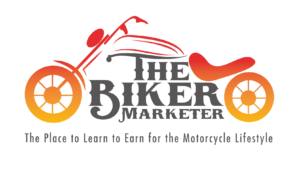Understanding Your Audience
Identifying Target Demographics
When I first started blogging about motorcycles, I had to take a step back and really think about who my audience was. This isn’t just about age and gender; it’s about understanding their riding preferences, lifestyle choices, and the type of content that resonates with them. Knowing your demographic can help shape your entire blog direction.
For instance, are you looking to engage with novice riders or seasoned veterans? Perhaps your niche lies in touring adventures, dirt bikes, or vintage motorcycling? Each segment has distinct interests and questions that can guide your keyword research. Making a list of potential audience attributes can be quite illuminating!
The more you understand your readers, the more tailored your content becomes, making them feel like you’re speaking directly to them. This personal connection is what keeps them coming back for more!
Feedback and Interaction
I can’t stress this enough: engaging with your audience can provide invaluable insights. Comments on your blog posts, social media interactions, and even emails can illuminate what your readers care about the most. Listening to your audience helps inform your keyword strategy significantly.
Additionally, consider conducting surveys or polls on your platforms. These tools can help you gather data about what topics excite your readers, which can directly translate into effective keywords. Plus, they love having their voices heard!
Once you start doing this regularly, you’ll find that gathering feedback becomes a natural part of your content creation process. It’s not just about you writing; it’s about creating a community around mutual interests in motorcycling.
Using Analytics Tools
In my experience, tools like Google Analytics and social media insights are gold mines for understanding audience behavior. By digging into these data sources, I can see what types of content are performing well and which aren’t hitting the mark.
Look at the keywords bringing traffic to your site. This will help you refine your content strategy. If you notice that certain related terms pop up frequently in searches, those are your targets for future content! It’s all about adapting and evolving based on the hard data available.
Learning to navigate these analytics tools might seem daunting at first, but trust me, once you get the hang of it, you’ll wonder how you ever operated without it!
Choosing Relevant Keywords
Long-Tail Keywords
Long-tail keywords have been a game-changer for me in the motorcycle blogging space. Instead of targeting broad phrases like “motorcycles,” I focus on specific phrases that target a more niche audience. For example, “best helmets for touring motorcycles” is a great long-tail keyword.
These keywords often have less competition, which means it’s easier to rank for them in search engines. Plus, they usually convert better because searchers know exactly what they want when they use these specific terms!
I’ve found that getting creative with long-tail keywords can end up pulling in traffic that truly aligns with the content I’m offering. It’s about understanding the questions your audience is asking and tailoring your content to provide those answers.
Local Keywords
If you’re running a motorcycle business, don’t underestimate the power of local SEO! Including location-based keywords like “motorcycle repair in [Your City]” can help attract local customers who are searching for services in their area.
When I integrated local keywords into my blog and business, I noticed an immediate uptick in local traffic. People love supporting their local shops, and targeting those keywords makes it easier for them to find you.
Remember, it’s not just about fishing in a vast ocean. Sometimes it’s about casting your line in a well-stocked pond nearby!
Analyzing Competitor Keywords
Take a look at what your competitors are doing. Tools like SEMrush or Ahrefs allow you to see which keywords are driving traffic to their sites. Check out their top-performing content and see if you can find gaps in the information they provide.
This isn’t about copying but rather learning from what others are doing well or poorly. This analysis can spark ideas for keywords you might not have considered before.
Getting a sense of what your rivals are targeting can also help you think outside the box. Maybe their content is hitting the mark, but there’s a section they missed—something that represents a unique angle you could take!
Creating High-Quality Content
Consistency is Key
As I ventured into the world of blogging, I learned that consistency is one of the most crucial aspects. Regularly updating your blog with fresh, high-quality content keeps your audience engaged and helps with SEO. Search engines love new content, which can boost your rankings.
Creating a content calendar has been a lifesaver. It helps me plan ahead with posts that align with my keyword strategy while ensuring that I’m posting consistently. I can map out themed posts for each month or seasonal riding tips, making my writing process a lot smoother!
This discipline not only benefits your SEO but also establishes you as an authority in your niche. When people see that you’re regularly churning out valuable insights, they’re more likely to trust and engage with your brand!

Valuable and In-Depth Articles
Quality over quantity has always been my mantra. Whenever I sit down to write, I aim to produce content that’s genuinely helpful and informative. Each article should provide value—whether tips on maintenance or insights into the latest gear. If my readers leave feeling more informed, I’ve done my job!
Don’t shy away from crafting long-form content. In-depth articles can rank better on search engines and provide a comprehensive answer to your readers’ questions. Plus, longer articles often get more shares on social media, bringing in even more traffic.
Remember, you’re not just pumping out words to fill space; you’re building a resource for fellow motorcycle enthusiasts. They’ll appreciate the effort, and it fosters loyalty to your blog.
Engaging Visuals
Let’s be honest—nobody wants to scroll through a wall of text! Adding engaging visuals to your blog can be a total game-changer. Whether it’s high-quality images of the bikes, infographics about maintenance tips, or videos showcasing riding techniques, visual content captures attention quickly.
Personally, I love using images from my own rides. They not only bring authenticity to the blog but also help to connect with readers on a personal level. You can pair images with your text to break up the content and make it more inviting.
Additionally, integrating videos gives a face to your blog. It shows readers that there’s a real person behind the posts, and it often encourages them to stick around longer—all great for SEO!
Optimizing for Search Engines
On-Page SEO Techniques
Getting into SEO can feel intimidating, but I assure you it’s worth it! Start with the basics—optimize your title tags, meta descriptions, and headers to include your chosen keywords. This acts as your content’s handshake with search engines, telling them what your page is about.
Also, remember to use alt text for your images. This helps search engines index your content better and makes your blog more accessible to all users, including those with visual impairments.
Don’t forget to include internal links to related articles on your blog. This not only helps with SEO but keeps readers on your site longer. The more you can guide them through your content, the better their experience will be!
Building Quality Backlinks
Another powerful SEO strategy is building backlinks. When reputable websites link to your content, it signals to search engines that your information is valuable and trustworthy. It’s a bit like a vote of confidence from other folks in the industry.
I’ve found that reaching out to other motorcycle bloggers for guest posts or collaborations can lead to amazing opportunities to build backlinks. It’s mutually beneficial—you get a link, and they get a quality post!
Make quality a priority, though. Regularly updating your blog with high-value content will naturally attract backlinks in the long run. Focused effort on your part will draw attention; it’s all about being persistent!
Monitoring Performance
Finally, always keep an eye on the performance of your keywords. Are they bringing in traffic? Are people engaging with the content? Regularly checking analytics can help you re-evaluate and adjust your strategy as needed.
If you notice certain keywords aren’t performing, don’t hesitate to tweak your content or create new posts altogether. Flexibility is key to a successful SEO strategy.
By continuously refining your approach based on performance, you’ll steadily improve your blog’s visibility and reader engagement, turning those casual visitors into dedicated fans!
Frequently Asked Questions
1. What is the importance of keyword research for blogs?
Keyword research helps you understand what your audience is searching for, allowing you to create content that meets their needs and drives traffic to your blog.
2. How can I find relevant keywords for my motorcycle blog?
You can use tools like Google Keyword Planner, SEMrush, or Ahrefs to find keywords that align with what your audience is searching for, including long-tail and local keywords.
3. What role does audience engagement play in keyword research?
Engaging with your audience through comments, social media, and feedback helps you understand their interests and questions, which can shape your keyword strategy significantly.
4. Why is content quality crucial in keyword research?
High-quality content not only ranks better in search engines but also keeps readers engaged. It builds trust and authority, which encourages loyalty to your blog.
5. How often should I update my keyword strategy?
Regularly monitor your analytics to assess your keyword performance. As trends and audience interests change, you should adjust your strategy to stay relevant and effective.


